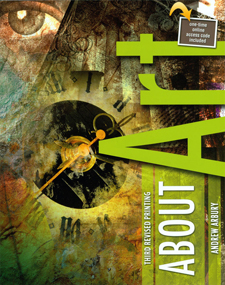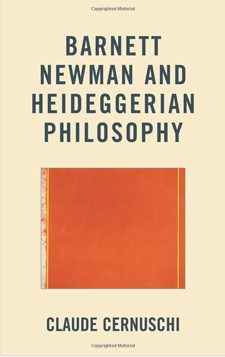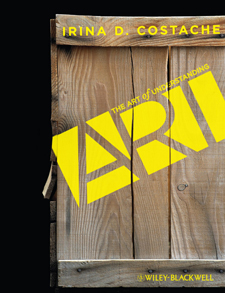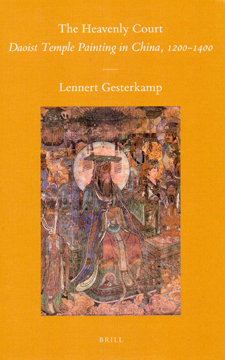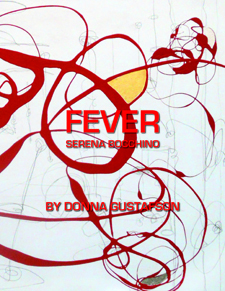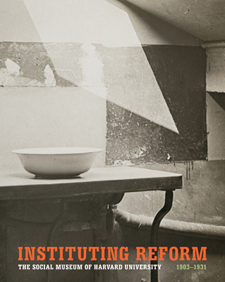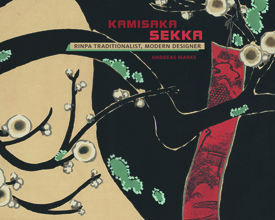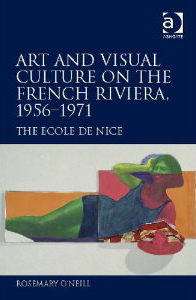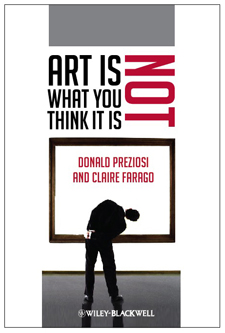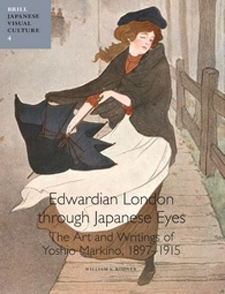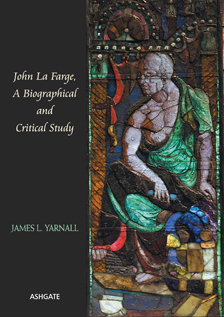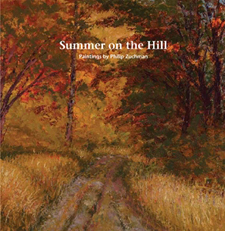CAA News Today
Exhibitions Curated by CAA Members
posted by CAA — June 15, 2012
Check out details on recent shows organized by CAA members who are also curators.
Exhibitions Curated by CAA Members is published every two months: in February, April, June, August, October, and December. To learn more about submitting a listing, please follow the instructions on the main Member News page.
June 2012
Nina Gara Bozicnik. Pretty Ugly. Boston Center for the Arts, Boston, Massachusetts, May 18–June 24, 2012.
Rachel Epp Buller. Art Lives! Kansas Chapter of the Feminist Art Project. City Arts, Wichita, Kansas, March 30–April 21, 2012.
Katie Cercone. Butter Digger. Cuchifritos Gallery/Project Space, New York, April 14–May 27, 2012.
Irina D. Costache. So Close and Yet So Far. José Drudis-Biada Art Gallery, Mount Saint Mary’s College, Los Angeles, California, February 7–March 24, 2012.
Susan Dackerman, Jennifer L. Roberts, and Jennifer Quick. Jasper Johns/In Press: The Crosshatch Works and the Logic of Print. Harvard Art Museums, Cambridge, Massachusetts, May 22–August 18, 2012.
Reni Gower. Papercuts: A Poetic Interplay of Light and Shadow. Norman and Emmy Lou P. Illges Gallery, Columbus State University, Columbus, Georgia, March 22–April 21, 2012.
Kerry Oliver-Smith. 2012 Westmoreland Juried Biennial. Westmoreland Museum of American Art, Greensburg, Pennsylvania, April 28–July 22, 2012.
Susanne Slavick. Out of Rubble. Bowling Green University Galleries, Bowling Green, Ohio, September 7–October 7, 2012.
Books Published by CAA Members
posted by CAA — June 15, 2012
Publishing a book is a major milestone for artists and scholars—browse a list of recent titles below.
Books Published by CAA Members appears every two months: in February, April, June, August, October, and December. To learn more about submitting a listing, please follow the instructions on the main Member News page.
June 2012
Andrew Stephen Arbury. About Art, 3rd rev. ed. (Dubuque, IA: Kendall Hunt Publishing, 2012).
Claude Cernuschi. Barnett Newman and Heideggerian Philosophy (Madison, NJ: Fairleigh Dickinson University Press, 2012).
Irina D. Costache. The Art of Understanding Art: A Behind the Scenes Story (Oxford, UK: Wiley-Blackwell, 2012).
Lennert Gesterkamp. The Heavenly Court: Daoist Temple Painting in China, 1200–1400 (Leiden, the Netherlands: Brill, 2011).
Donna Gustafson. Serena Bocchino: Fever (Milburn, NJ: Greg Smith Exhibit A Fine Art and Editions, 2012).
Deborah Martin Kao and Michelle Lamunière, eds. Instituting Reform: The Social Museum of Harvard University, 1903–1931 (Cambridge, MA: Harvard Art Museums, 2012).
Andreas Marks. Kamisaka Sekka: Rinpa Traditionalist, Modern Designer (San Francisco: Pomegranate, 2012).
Rosemary O’Neill. Art and Visual Culture on the French Riviera, 1956–1971 (Burlington, VT: Ashgate, 2012).
Donald Preziosi and Claire Farago. Art Is Not What You Think It Is (Oxford, UK: Wiley-Blackwell, 2012).
William S. Rodner. Edwardian London through Japanese Eyes: The Art and Writings of Yoshio Markino, 1897–1915 (Leiden, the Netherlands: Brill, 2012).
James L. Yarnall. John La Farge, a Biographical and Critical Study (Burlington, VT: Ashgate, 2012).
Philip Zuchman. Summer on the Hill: Paintings by Philip Zuchman (New York: Abingdon Square Publishing, 2012).
CAA Seeks Committee Members
posted by Vanessa Jalet — June 13, 2012
Get involved in an issue that you care about! CAA invites members to apply for service on one of its nine Professional Interests, Practices, and Standards Committees. These committees address critical issues in the visual arts in an attempt to deal with, and respond to, the pressing concerns of CAA’s members.
Communicating via listserv throughout the year, each committee takes on the objectives it has set for itself, which include: programming ARTspace at the Annual Conference; establishing best practices, standards, and guidelines; sharing and examining pedagogical practices; examining new and developing technologies; addressing issues critical to emerging professionals as well as concerns of diversity and gender; extending the reach of CAA internationally; and clarifying and debating matters of fair use, copyright, and open access. This vigorous exchange of information reveals common goals and leads to solutions that will help CAA members to weather their changing professional landscape.
Committees are active at the Annual Conference in February, where each presents one or two sessions on a subject of its choosing. These sessions, sometimes collaborations between committees and sometimes dealing with workforce issues, are meant to be of immediate value to CAA members. Also at the conference, the committees hold face-to-face business meetings and discuss the past year’s accomplishments while targeting ideas for future projects. Participation on a committee is an excellent and fruitful way to network with other CAA members, and for some individuals it is a stepping-stone to service on the organization’s Board of Directors.
The public face of several CAA committees appears most visibly at the conference. The Services to Artists Committee, for example, conceives nearly all content and programming for ARTspace, ARTexchange, and the Media Lounge, while the Student and Emerging Professionals Committee organizes events on professional-development issues that take place in the Student and Emerging Professionals Lounge.
Online, the Committee on Women in the Arts publishes the monthly CWA Picks of exhibitions and events related to feminist art and scholarship, among other activities. Last year, the Museum Committee conducted a survey of museum-based members; it also advocates greater access to museum image collections. After conducting a survey of its own, the International Committee warmly welcomed and hosted twenty travel-grant recipients who attended the Los Angeles conference from around the world.
The Professional Practices Committee continues to study, develop, and revise CAA’s Standards and Guidelines, so that these documents, once approved by the CAA board, become authoritative, comprehensive documents for art-related disciplines. The Committee on Diversity Practices is compiling syllabi that consider diversity and inclusiveness in curricula and the classroom. The Committee on Intellectual Property completely updated all intellectual-property information on CAA’s website and continues to monitor the tricky terrain of copyright and fair use, which dramatically affects the work lives of artists and scholars.
Committee members serve three-year terms (2013–16), with at least one new member rotating onto a committee each year. Candidates must be current CAA members and possess expertise appropriate to the committee’s work. Members of all committees volunteer their services without compensation. Committee work is not for the faint of heart; it is expected that once appointed to a committee, a member will involve himself or herself in an active and serious way.
The following vacancies are open for terms beginning in February 2013:
- Committee on Diversity Practices: 2 members
- Committee on Intellectual Property: 5–6 members
- Committee on Women in the Arts: 2 members
- Education Committee: 5 members
- International Committee: 2 members
- Museum Committee: 3 members
- Professional Practices Committee: 3 members
- Services to Artists Committee: 4 members
- Student and Emerging Professionals Committee: 2 members
CAA’s president, vice president for committees, and executive director review all candidates in early November and make appointments in December, prior to the Annual Conference. New members are introduced to their committees during their respective business meetings at the conference.
Nominations and self-nominations should include a brief statement (no more than 150 words) describing your qualifications and experience and an abbreviated CV (no more than 2–3 pages). Please send all materials to Vanessa Jalet, CAA executive liaison. Deadline: October 12, 2012.
June 2012 Issue of The Art Bulletin
posted by Christopher Howard — June 13, 2012
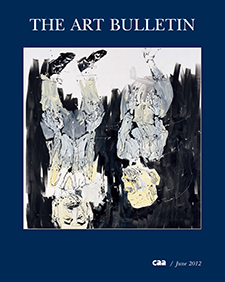 The cover image of the June 2012 issue of The Art Bulletin shows the unmistakable signature style of the contemporary artist Georg Baselitz, who has also written the lead text for the issue’s Notes from the Field. In this section, nine scholars from divergent fields—among them Kirk Ambrose, Elizabeth Edwards, Cordula Grewe, Daniel Heller-Roazen, and Ian McLean—join the artist in writing on the theme of appropriation. The June issue presents the second installment of new features in The Art Bulletin, sections that will continue for several years in the leading publication of international art-historical scholarship. In Regarding Art and Art History, Andrew Hemingway revisits his early fascination with a John Constable painting, Chain Pier, Brighton (1826–27), and describes how the work has shaped his methodological approach to writing art history. Finally, in a wide-ranging interview with Dan Karlholm, the art historian Linda Nochlin discusses her five-decade career.
The cover image of the June 2012 issue of The Art Bulletin shows the unmistakable signature style of the contemporary artist Georg Baselitz, who has also written the lead text for the issue’s Notes from the Field. In this section, nine scholars from divergent fields—among them Kirk Ambrose, Elizabeth Edwards, Cordula Grewe, Daniel Heller-Roazen, and Ian McLean—join the artist in writing on the theme of appropriation. The June issue presents the second installment of new features in The Art Bulletin, sections that will continue for several years in the leading publication of international art-historical scholarship. In Regarding Art and Art History, Andrew Hemingway revisits his early fascination with a John Constable painting, Chain Pier, Brighton (1826–27), and describes how the work has shaped his methodological approach to writing art history. Finally, in a wide-ranging interview with Dan Karlholm, the art historian Linda Nochlin discusses her five-decade career.
The June Art Bulletin features four essays that cover a wide range of topics and time periods in the history of art. Sonya S. Lee examines the role of patronage and appropriation in tenth-century Dunhuang through her analysis of the pictorial program of Cave 61 at Mogao in northwestern China. Kishwar Rizvi’s article explores the dynamic relationship between image and text in the 1605 manuscript Shahnama (Book of Kings) and how the folio’s paintings can be viewed as a surrogate portrait of the charismatic king, Shah ‘Abbas. Next, Katherine M. Kuenzli explores the “total work of art” that is Henry van de Velde’s 1914 Werkbund Theater Building and its role in shaping German modernism and national identity before and after World War I. In “Picasso’s First Constructed Sculpture: A Tale of Two Guitars,” Christine Poggi analyzes the artist’s 1912 paper Guitar as a modernist masterpiece unto itself, and not merely as the model for subsequent versions made from sheet metal; Poggi’s essay also features unusual new photographs of several paper sculptures that she discusses.
In the Reviews section, Cammy Brothers assesses Marvin Trachtenberg’s book, Building-in-Time: From Giotto to Alberti and Modern Oblivion, and Diane H. Bodart reviews two books, Joanna Woodall’s Anthonis Mor: Art and Authority and Laura R. Bass’s The Drama of the Portrait: Theatre and Visual Culture in Early Modern Spain. Then, Victor I. Stoichita looks at Michael Fried’s The Moment of Caravaggio, and Jonathan Hay discusses Craig Clunas’s approach to Chinese art history through a reading of five of his recent books on the subject. Finally, Barbara Wittmann reviews two catalogues—The Spectacular Art of Jean-Léon Gérôme (1824–1904) and Reconsidering Gérôme—that accompanied a 2011 exhibition at the J. Paul Getty Museum in Los Angeles and the Musée d’Orsay in Paris.
Please see the full table of contents for June to learn more. CAA sends The Art Bulletin to all institutional members and to those individuals who choose to receive the journal as a benefit of their membership.
The next issue of The Art Bulletin, to be published in September 2012, will feature the art historian Richard Shiff on the concept of interpretation in Regarding Art and Art History, “contingency” as the topic in Notes from the Field, and an interview with the architectural historian James S. Ackerman. The long-form essays will examine iconoclasm and the image as representation in the eighth century, Francesco Rosselli’s engravings and the development of print culture in Renaissance Italy, seventeenth-century Chinese handscroll painting, and the trials of the modern Viennese architect Adolf Loos. The Reviews section will include analyses of books on Giotto, Willem de Kooning, civil rights, photography, and the image of the wind.
REPORT ON THE MEETINGS OF THE EXECUTIVE COMMITTEE AND THE BOARD OF DIRECTORS
posted by Linda Downs — June 12, 2012
The CAA Board of Directors met in New York on Sunday, May 6, 2012, for its spring meeting. One day before, the Executive Committee convened to hear presentations from invited guests. The following report summarizes the contents of these two meetings.
Executive Committee
The Executive Committee meeting featured two invited speakers. The first, Raym Crow of the Chain Bridge Group, presented the first phase of the Publications Analysis, a report that is exploring the online development of CAA’s two print journals. He announced the results from a survey of individual CAA members to determine their interest in receiving online and/or print journals. The majority of members, Crow disclosed, prefer both options. He also offered findings from a thorough financial risk analysis, should institutional online subscriptions cannibalize individual memberships. In the analysis’s next phase, Crow will assess the production costs of The Art Bulletin and Art Journal and compare CAA’s business model to others in academic publishing. The resulting baseline figures will be used to determine the future direction of journal publications. Crow anticipates that it will take about six to eight months to complete this stage.
The second presenter, Gretchen Wagner, general counsel of ARTstor and a member of CAA’s Committee on Intellectual Property, discussed the current state of guidelines for fair use of copyrighted materials in the arts and humanities, including two documents recently created by the Visual Resources Association and the Association of Research Libraries that were endorsed by CAA in February 2012. She described how many academic and professional organizations for library science, video, poetry, and dance have developed fair-use guidelines for their fields; she also talked about OpenCourseWare. Some have noted that US courts increasingly rely on best practices from professional organizations to interpret cases related to fair use. Therefore CAA, which represents key stakeholders—artists, art historians, museum curators, conservators, and art administrators—is uniquely positioned to develop effective guidelines for fair use of copyrighted works of art and other visual material in scholarship, art making, and related activities. (See below for more on this topic.)
Board of Directors
CAA’s incoming board president, Anne Collins Goodyear of the Smithsonian Institution’s National Portrait Gallery, warmly welcomed four recently elected board members: Suzanne Preston Blier, Allen Whitehill Clowes Professor of Fine Arts and Professor of African American Studies, Harvard University; Stephanie D’Alessandro, Gary C. and Frances Comer Curator of Modern Art, Art Institute of Chicago; Gail Feigenbaum, Getty Research Institute; and Charles A. Wright, Professor and Chair, Department of Art, Western Illinois University. The board also accepted the resignation of Jean Miller of the University of North Texas and elected Doralynn Pines, a New York–based independent art historian and consultant to museums and libraries, to fill the remaining two years of Miller’s term. The board also appointed Roger Crum of the University of Dayton (and a CAA board member) to the Nominating Committee.
Teresa Lopez, CAA chief financial officer, presented a balanced operating budget at $4.79 million for fiscal year 2013 (July 1, 2013–June 30, 2014), which the board discussed and approved. She also distributed the organization’s IRS Form 990 for 2011. The board then approved resolution to amend CAA’s statement of investment policy and guidelines to comply with the investment standards for nonprofit corporations under the New York Prudent Management of Institutional Funds Act.
Randall C. Griffin, CAA vice president for publications, presented a resolution to revise the Statement of Conflict of Interest and Confidentiality that addresses proper relationships for CAA jurors and journal editors. The board approved the resolution and adopted the revised statement.
In response to Wagner’s discussion on intellectual property at the Executive Committee meeting, Goodyear presented a resolution to establish a Task Force to Develop Fair-Use Guidelines, which the board reviewed, discussed, and approved. As the resolution states, “CAA believes that it would be appropriate to establish a set of guidelines that would document current fair-use practices in the visual arts with respect to the activities of scholarly publishing, the creation of works of art, and the curation and exhibition of works that include another’s copyrighted works.” The board anticipates that it will take the task force eighteen months to two years to develop the guidelines, using focus groups of CAA members, a community advisory group, and a legal advisory group.
Michael Fahlund, CAA deputy director, and Lauren Stark, CAA manager of programs and archivist, presented an Archives Policy Statement, which the board approved. Over the past two years, Stark has led the establishment of an archive of CAA records, which is available to scholars.
For further information, or if you have questions or have advocacy issues you would like to bring to the board’s attention, please contact Anne Collins Goodyear, board president, and Linda Downs, executive director and chief executive officer, at info@collegeart.org.
Join the Millard Meiss Publication Fund Jury
posted by CAA — June 11, 2012
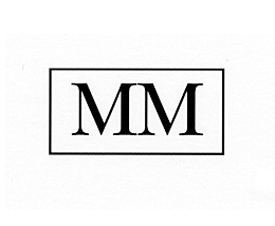 CAA seeks nominations and self-nominations from one member/individual with a specialization in a historic period in Asian, Southeast Asian, American, or Pre-Columbian art to serve on the jury for the Millard Meiss Publication Fund for a four-year term, ending on June 30, 2016. Candidates must be actively publishing scholars with demonstrated seniority and achievement; institutional affiliation is not required.
CAA seeks nominations and self-nominations from one member/individual with a specialization in a historic period in Asian, Southeast Asian, American, or Pre-Columbian art to serve on the jury for the Millard Meiss Publication Fund for a four-year term, ending on June 30, 2016. Candidates must be actively publishing scholars with demonstrated seniority and achievement; institutional affiliation is not required.
The Meiss jury awards grants that subsidize the publication of book-length scholarly manuscripts in the history of art and related subjects. Members review manuscripts and grant applications twice a year and meet in New York in the spring and fall to select the awardees. CAA reimburses jury members for travel and lodging expenses in accordance with its travel policy.
Candidates must be current CAA members and should not be serving on another CAA editorial board or committee. Jury members may not themselves apply for a grant in this program during their term of service. Nominators should ascertain their nominee’s willingness to serve before submitting a name; self-nominations are also welcome. Please send a letter describing your interest in and qualifications for appointment, a CV, and contact information to: Millard Meiss Publication Fund Jury, College Art Association, 50 Broadway, 21st Floor, New York, NY 10004; or send all materials as email attachments to Alex Gershuny, CAA editorial associate. Deadline: August 8, 2012.
Committee on Women in the Arts Picks for June-Juy 2012
posted by CAA — June 10, 2012
Each month, CAA’s Committee on Women in the Arts selects the best in feminist art and scholarship. The following exhibitions and events should not be missed. Check the archive of CWA Picks at the bottom of the page, as several museum and gallery shows listed in previous months may still be on view or touring.
June–July 2012
Fullmoon Night with Yoko Ono
Djurgården, Stockholm
Moderna Museet, Skeppsholmen, Stockholm, Sweden
June 4–5, 2012
On the night of June 4 turning into June 5, art lovers had the chance to experience two early Yoko Ono pieces, Evening till Dawn (1964) and Secret Piece (1953), on the lush island of Djurgården in Stockholm. The event will take place in conjunction with Yoko Ono: Grapefruit at the Moderna Museet in Stockholm, a retrospective that showcases early experimental films and a selection of “instructions” published in Ono’s book Grapefruit (1964). The exhibition provides a welcome opportunity to view Ono’s art in the context of the Fluxus movement of the 1960s, in which she was a key player, and to see her wide-ranging influence on today’s art scene. Specifically for the Moderna Museet, Ono has created a new instruction, “Search for the Fountain,” that has been interpreted in a variety of mediums by a group of international artists.
Klonaris/Thomadaki: The Angel Ablaze
Benaki Museum
138 Pireos Street, Athens, Greece 11854
June 9, 2012
The Angel Ablaze offers a thorough introduction to the work of two avant-garde filmmakers and multimedia pioneers, Maria Klonaris and Katerina Thomadaki, whose holistic approach to filmmaking is called Cinema of the Body. At the Benaki Museum, Klonaris and Thomadaki will teach a master class after a screening of The Angel Cycle, a work inspired by a photograph of a hermaphrodite found in the archives of Klonaris’s gynecologist father in 1985. The film explores the idea of the intersexual body as partially angelic and further explicates this figure as the ideal metaphor for a bodily approach to the cinema.
“How Women Work”
Nottingham Contemporary
Weekday Cross, Nottingham, NGI 2GB, United Kingdom
June 14–19, 2012
In conjunction with Mika Rottenberg’s eponymous exhibition (May 5–July 1, 2012), Nottingham Contemporary is hosting “How Women Work,” a three-part symposium that addresses the relationship of women to labor in postindustrial economies and how feminist thought on the role of women in the workplace has evolved since the 1960s. The first event, on June 14, is a screening of María Ruido’s documentary film, Amphibious Fictions (2005), about the lives of female factory workers in two Spanish cities in the industrial belt surrounding Barcelona. The next day, a symposium titled “Art, Gendered Labor, and Resistance” will engage artists and theorists from the United Kingdom and Europe to explore the issue of art as gendered labor, the relationship between resistance and oppression, and the generational shifts that have affected the feminist dialogue on labor. The featured speakers are Jo Applin, professor of modern and contemporary art at the University of York; Angela Dimitrakaki, professor of modern and contemporary art the University of Edinburgh; Julia Morandeira, professor of Spanish contemporary art at Universitat Pompeu Fabra in Barcelona; Nina Power, a philosophy professor at Roehampton University in London; Maria Ruido, an artist and filmmaker; and Marina Vishmidt, a London-based art writer. The last event, on June 19, is a screening of African director, Ousmene Sembène’s La Noire de… (1966). The fictional film takes place in postcolonial Senegal and tells the story of a young woman from Dakar who faces many trials and tribulations as a live-in nanny working for a family in the French Riviera.
Sigalit Landau: Soil Nursing
Kamel Mennour
47 rue Saint-André des arts, Paris, France 75006
June 2–July 25, 2012
With Soil Nursing, Sigalit Landau brings together a potent combination of sculptures, photographs, and videos that evokes the body in space and its changing relationship to nature. Madonna and Child (2012), a series of twisted marble forms resting on exquisitely carved wooden bases, suggests a larvalike, maternal body crossed with the streamlined effervescence of Constantin Brancusi’s Bird in Space (1923). The abstract sculptures are complemented by lush, color photographs and videos depicting the dreamy environment of an olive grove in the Negev Desert in southern Israel, the artist’s native country.
Chantal Joffe
Cheim and Read
547 West 25th Street, New York, NY 10001
May 4–June 22, 2012
For her second solo show at Cheim and Read, the British painter Chantal Joffe continues her investigation of portrayals of woman in art with a selection of large and small paintings. Joffe’s influences extend from fashion photography and personal snapshots to works by contemporary artists such as Alex Katz and Elizabeth Peyton, who similarly address society and subjectivity through portraiture. In this exhibition Joffe also pays explicit homage to Alice Neel with a striking self-portrait of herself, naked on a bed with stripped covers—an image reminiscent of Neel’s 1980 portrait of herself, sitting nude in a stripped armchair.
Wangechi Mutu: blackthrones
Gladstone Gallery
12 Rue de Grand Cerf, Brussels, Belgium 1000
May 15–July 7, 2012
In blackthrones, Wangechi Mutu’s first solo exhibition in Brussels, the artist fills the elegant rooms of Gladstone Gallery with chairs wrapped in black garbage bags, metallic tinsels, and colorful debris and supported by spindly, insectlike legs. Despite this decoration, the wooden chairs are recognizable as being representative of English colonial design, hinting at a critique of Western hegemony while having fun with the transformative possibilities of sculpture.
Jo Spence: Work (Part I)
SPACE
129–131 Mare Street, London, E8 3RH, United Kingdom
June 1–July 15, 2012
Jo Spence: Work (Part II)
Studio Voltaire
1a Nelson’s Row, London, SW4 7JR, United Kingdom
June 12–August 11, 2012
A two-part retrospective of the photographic work of Jo Spence (1934–1992) offers a unique opportunity for the critical reassessment of an often misunderstood and certainly understudied “amateur” photographer. Spence emerged as a pivotal figure in the mid-1970s from the British photographic left, bridging her commitment to feminism, socialism, and education with a hungry, documentary impulse that took in every aspect of her life and those around her. The first part of the exhibition, on view at SPACE, focuses on the 1960s to the 1980s, years in which Spence founded the Hackney Flashers, a collective of women photographers, and organized photography co-ops and workshops. The exhibition continues at Studio Voltaire with her move toward methods of therapy through photography and patient empowerment and through her own struggles with breast cancer.
Edy Ferguson: Selected Works 1993 to the Present
Benaki Museum
138 Pireos Street, Athens, Greece 11854
June 1–July 29, 2012
Edy Ferguson’s survey exhibition at the Benaki Museum familiarizes Greek audiences with the multifaceted work of this American artist who now lives and works in Athens and London. Ferguson fuses a Pop art sensibility (her slick painting style is reminiscent of James Rosenquist) into her work that address a host of contemporary issues, such as the recent economic upheavals in Greece. The museum installation does not indicate boundaries in Ferguson’s various practices, opting instead to showcase her drawing, painting, videos, and performances as a “single and articulated Gesamtkunstwerk.”
Doris Salcedo: Plegaria Muda
MAXXI: National Museum of 21st Century Arts
Via Guido Reni 4A, Rome, Italy 00196
March 15–June 24, 2012
Doris Salcedo’s installation Plegaria Muda (translated as Mute Prayer) is an antimonumental memorial to victims of war and urban violence. Composed of over one hundred pairs of rectangular wooden tables whose tops sandwich a mound of earth that enables clumps of grass to grow through the crevices, the installation is keenly evocative of a graveyard or war memorial. Salcedo researched two specific atrocities when creating the memorial: the brutality of life in the ghettoes of southeast Los Angeles and the murder of numerous impoverished Colombians by factions of the Colombian army from 2003 to 2009. According to the artist, “Plegaria Muda is an attempt to live out this grief, a space demarcated by the radical limit imposed by death. A space that is outside of life, a place apart, that reminds us of our dead.”
caa.reviews Publishes Dissertations Completed and In Progress for 2011
posted by Betty Leigh Hutcheson — June 07, 2012
caa.reviews has just published the authors and titles of doctoral dissertations in art history and visual studies—both completed and in progress—from American and Canadian institutions for calendar year 2011. You may browse by chronological or geographic subject, such as Renaissance/Baroque Art, Japanese/Korean Art, or Contemporary Art, or by specific medium or genre, such as Performance Studies or Drawings/Prints/Photography/Works on Paper. Identified in each category are the student’s name, dissertation title, school, and adviser.
Each institution granting the PhD in art history and/or visual studies submits dissertation titles once a year to CAA for publication. The caa.reviews list also includes dissertations completed and in progress between 2002 and 2010, making basic information about their topics available through web searches.
Spring 2012 Recipients of the Millard Meiss Publication Fund
posted by Christopher Howard — June 04, 2012
This spring, CAA awarded grants to the publishers of six books in art history and visual culture through the Millard Meiss Publication Fund. Thanks to the generous bequest of the late professor Millard Meiss, CAA gives these grants to support the publication of scholarly books in art history and related fields.
The six grantees for spring 2012 are:
- Todd Cronan, Matisse, Bergson, and the Philosophical Temper of Modernism, University of Minnesota Press
- John J. Curley, Andy Warhol, Gerhard Richter, and Cold War Visuality: A Conspiracy of Images, Yale University Press
- Laurinda Dixon, The Dark Side of Genius: The Melancholic Persona in Art, ca. 1500–1700, Pennsylvania State University Press
- Dorothy Habel, “When All of Rome Was under Construction”: The Building Process in Baroque Rome, Pennsylvania State University Press
- Mary Ellen Miller and Claudia Lozoff Brittenham, The Spectacle of the Late Maya Court: Reflections on the Paintings of Bonampak, University of Texas Press
- Diane Radycki, Paula Modersohn-Becker: The First Modern Woman Artist, Yale University Press
Books eligible for Meiss grants must already be under contract with a publisher and on a subject in the visual arts or art history. Authors must be current CAA members. Please review the application guidelines for more information. The deadline for the fall 2012 grant cycle is October 1, 2012.
Apply to the CAA International Travel Grant Program
posted by Janet Landay, Program Manager, Fair Use Initiative — June 01, 2012
The deadline has been extended to Friday, August 24, 2012.
CAA invites individuals to apply to the International Travel Grant Program, generously supported by the Getty Foundation. This program provides funding to twenty art historians, museum curators, and artists who teach art history to attend the 101st Annual Conference, taking place February 13–16, 2013, in New York. The grant covers travel expenses, hotel accommodations, per diems, conference registrations, and one-year CAA memberships. For 2013, CAA will offer preconference meetings on February 11 and 12 for grant recipients to present and discuss their common professional interests and issues.
The goal of the program is to increase international participation in CAA and to diversify the organization’s membership (presently seventy-two countries are represented). CAA also wishes to familiarize international participants with the submission process for conference sessions and to expand their professional network in the visual arts. As they did this year, members of CAA’s International Committee and the National Committee for the History of Art have agreed to host the participants in 2013.
Are You Eligible?
Applicants must be practicing art historians who teach at a university or work as a curator in a museum, or artists who teach art history. They must have a good working knowledge of English and be available to participate in CAA events from February 11 to 17, 2013. Applicants must be able to obtain a travel visa to visit the United States for the duration of the conference. Professionals from developing countries or from nations underrepresented in CAA’s membership are especially encouraged to apply. Applicants do not need to be CAA members. This grant program is not open to graduate students or to those participating in the 2013 conference as chairs, speakers, or discussants.
How to Apply
Please review the application specifications and complete the application form. If you have questions about the process, please email Janet Landay, project director of the CAA International Travel Grant Program.
Applications should include:
- A completed application form
- A two-page version of the applicant’s CV
- A letter of recommendation from the chair, dean, or director of the applicant’s school, department, or museum
Please send all application materials as Word or PDF files to Janet Landay, project director of the CAA International Travel Grant Program.
All application materials must be received by Friday, August 24, 2012. CAA will notify applicants on Monday, October 1, 2012.





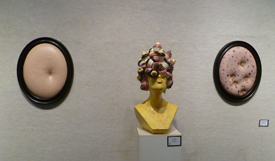 Installation view of Art Lives! Kansas Chapter of the Feminist Art Project
Installation view of Art Lives! Kansas Chapter of the Feminist Art Project
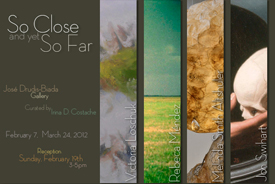 Invitation card for So Close and Yet So Far
Invitation card for So Close and Yet So Far
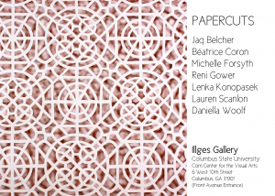 Invitation card for Papercuts: A Poetic Interplay of Light and Shadow
Invitation card for Papercuts: A Poetic Interplay of Light and Shadow
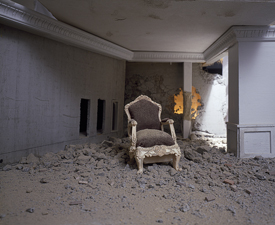 Wafaa Bilal, The Ashes Series, 2009, archival inkjet print mounted on diebond, 38 x 46½ in. (artwork © Wafaa Bilal)
Wafaa Bilal, The Ashes Series, 2009, archival inkjet print mounted on diebond, 38 x 46½ in. (artwork © Wafaa Bilal)
